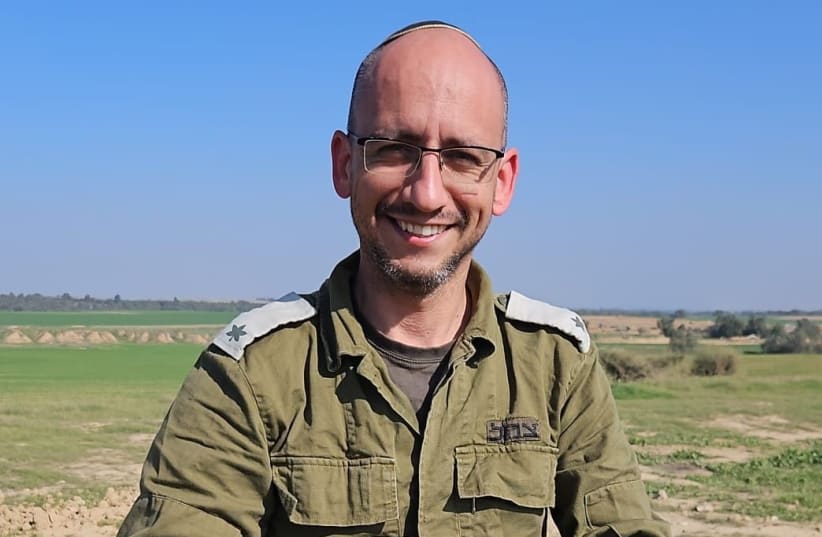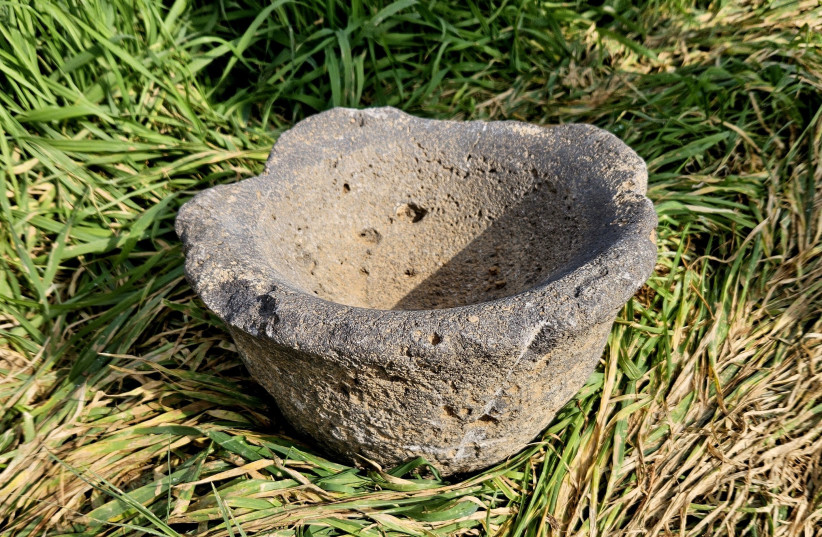IDF reserve officers walking in an assembly area outside the Gaza Strip have found an ancient mortar, the bowl-shaped piece used to grind grain with a pestle.
The reservists – who included an archaeologist from the Israel Antiquities Authority (IAA) – reported their unusual find to the IAA, which sent Sarah Tal, the IAA’s archaeologist to identify it and take it for examination and safekeeping.
This was only a few weeks after other IDF reservists in the 404th battalion of the 282nd Artillery Brigade found, stuck in the sandy earth a Byzantine oil lamp that had been used for lighting a wick stuck in oil.
Discovering the mortar
IDF Lt.-Col. (res.) Yair Amitsur, the commander of the civilian frontline in Division 143, and Maj. (res.) Eliashiv Buhbut discovered the tool made of basalt, which weighs more than 10 kg. “As part of the routine field patrols in the sector, we pulled it out and discovered that it was a rather large and heavy vessel. Amitsur, who ordinarily is an IAA archaeologist, immediately recognized that it was an ancient grinding tool.
Black-colored basalt is familiar from the North of the country as in Tiberias or Safed, or from other remote areas,” Amitsur explained. “It was clear to me that the tool we found was brought here from afar and was probably used in the past in the home of one of the residents of the area to grind grain or other products, which is done with a heavy pestle. We were excited to suddenly receive a greeting from the past and engage in some good news. The tool reminds us that throughout the generations, the Western Negev served as a significant settlement area where a variety of cultures settled. There were also wars in the past, but in the end, settlement always returned, and the area again flourished,” he added.
The reserve officer agreed that “we are busy helping to restore this region of the country. We are sure that – as in ancient times – today we will also recover from the disaster that befell us and return to settle in the Western Negev.”
Mortars of the type found now were generally used for grinding and crushing dry products such as grains, lentils, flour, and the like. The grinding tools were a popular commodity and common in homes, while in industrial areas, millstones were used to grind large quantities of flour.
“We are doing important work here, but I look forward to the days when I can return to doing archaeology full-time, said Amitsur with a smile. “The grinding tool was perfectly preserved. Such tools were used in a variety of periods, from the biblical times to the Mamluk period. Tal presented each of them with a certificate of good citizenship.
“The war brings us together with extraordinary situations also on the archaeological front,” commented IAA Director-General Eli Escuzido. “The land of the Land of Israel – and in particular the Western Negev, is saturated with history and ancient findings, and the IAA is cooperating with the IDF to preserve them even in a war situation.
The officers showed exemplary citizenship by returning the vessel so that it could be properly preserved by the IAA. In this case, we were fortunate that one of our employees, an archaeologist serving in the reserves, identified the ancient find and knew how to proceed, but I would like to remind everyone that in the case of finding an ancient find, one must, by law, leave it in its place and call us.”

